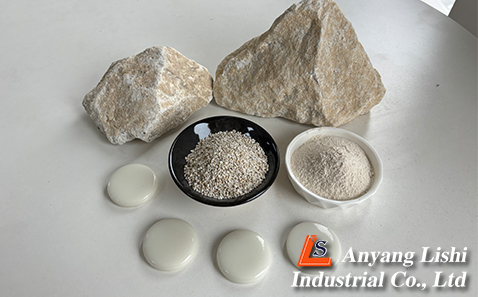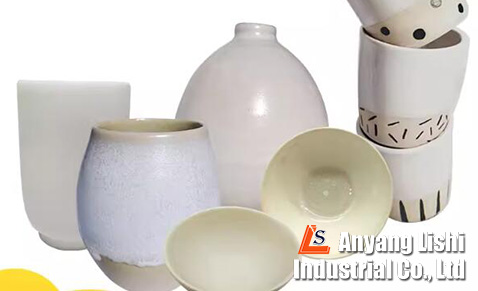
Whiteness refers to the ability of an object to reflect light. When light shines onto the surface of a material, it generates light reflection. The ratio of the intensity of the reflected light to the intensity of the incident light, compared with that of a standard sample, determines the corresponding whiteness value. Whiteness measurement is crucial in various industries, particularly in assessing the quality of materials like sodium feldspar used in ceramics production.
In the ceramics industry, the evaluation of whiteness is essential, as it directly influences the final appearance and quality of ceramic products. The process of measuring whiteness in ceramic raw materials, such as sodium feldspar, involves several steps. Firstly, the sample undergoes ball milling to achieve a consistent particle size distribution. This step ensures uniformity in the subsequent analyses. Next, the material is crushed into a fine powder to facilitate accurate measurements.

After grinding, the powdered sample is pressed into a compact form using a hydraulic press. This step is crucial for obtaining consistent and reproducible results during subsequent analyses. The compacted samples are then subjected to high-temperature firing in a kiln. This firing process simulates the conditions that the ceramic material will undergo during its intended use. It helps to determine the material’s behavior under extreme temperatures and ensures that its whiteness remains stable even after processing.
Once the samples have been fired, their whiteness is measured using a whiteness meter. This instrument quantifies the reflectance of light from the material’s surface, providing an objective measure of its whiteness. By comparing the whiteness values obtained from the samples with those of standard references, manufacturers can assess the quality and consistency of their raw materials.
The whiteness of sodium feldspar holds significant importance in the ceramics industry for several reasons. Firstly, it directly influences the aesthetic appeal of ceramic products. Materials with higher whiteness values produce brighter and more vibrant glazes, enhancing the visual appeal of finished ceramic items. Additionally, whiteness is indicative of the purity and cleanliness of the raw material. Impurities or contaminants in sodium feldspar can affect its whiteness, leading to inconsistencies in the final product. Therefore, precise control over whiteness is essential to ensure the quality and performance of ceramic materials.

Furthermore, whiteness affects the technical properties of ceramic products. For instance, materials with higher whiteness values often exhibit better opacity and coverage, making them suitable for applications where opacity is desired, such as in porcelain manufacturing. Moreover, whiteness can impact the firing behavior and thermal expansion characteristics of ceramic materials, influencing their suitability for specific production processes.
In conclusion, the measurement and control of whiteness in sodium feldspar are critical aspects of ceramic production. By employing precise analytical techniques and maintaining strict quality standards, manufacturers can ensure the consistency, performance, and aesthetic appeal of their ceramic products. Whiteness serves as a key parameter for assessing the quality of raw materials and optimizing production processes in the ceramics industry.

Whether you have questions or you would just like to say hello,Contact us!
Call Anytime:
+86 15837207537Send E-mail:
info@lsakminerals.comAddress:
Anyang City , Henan Province, China.